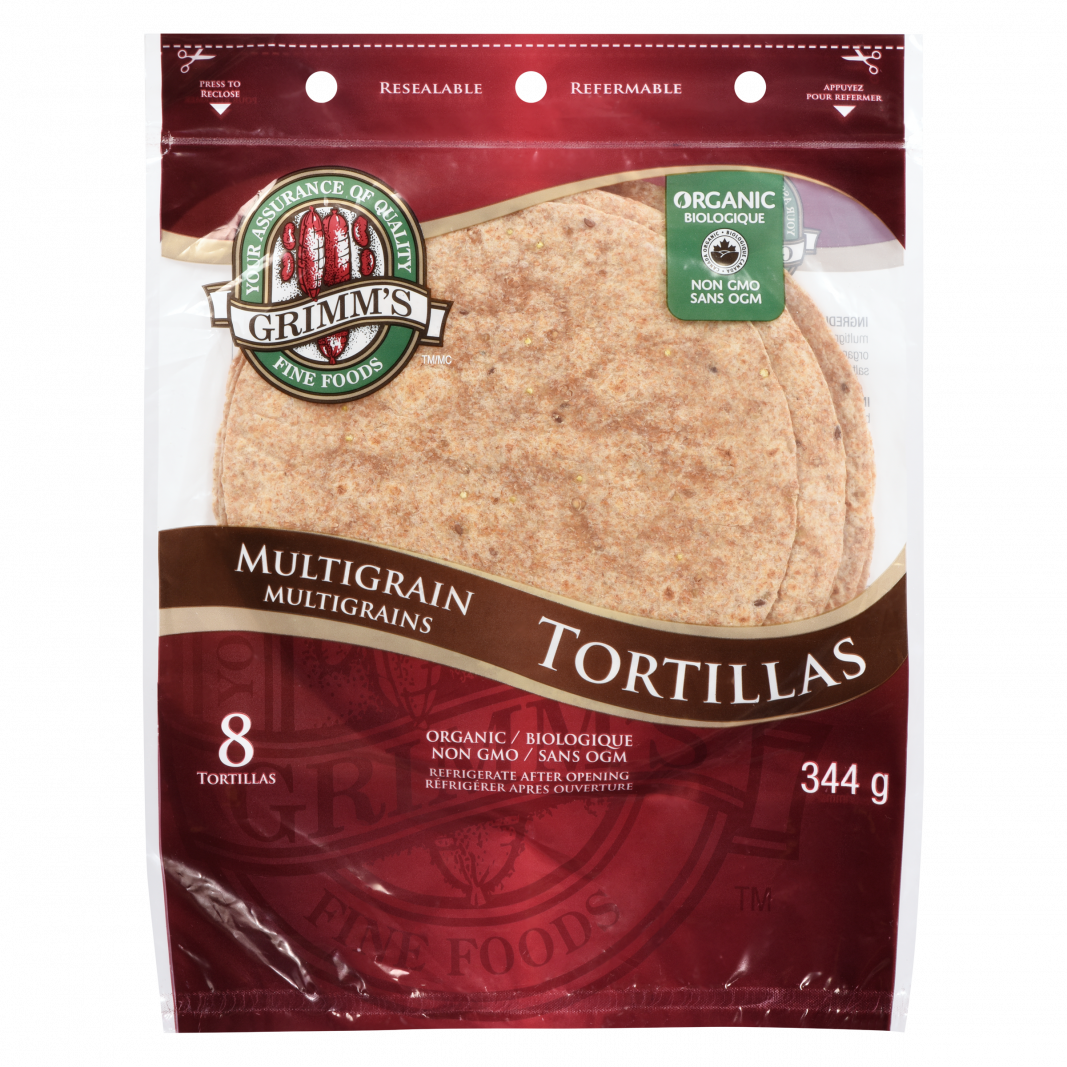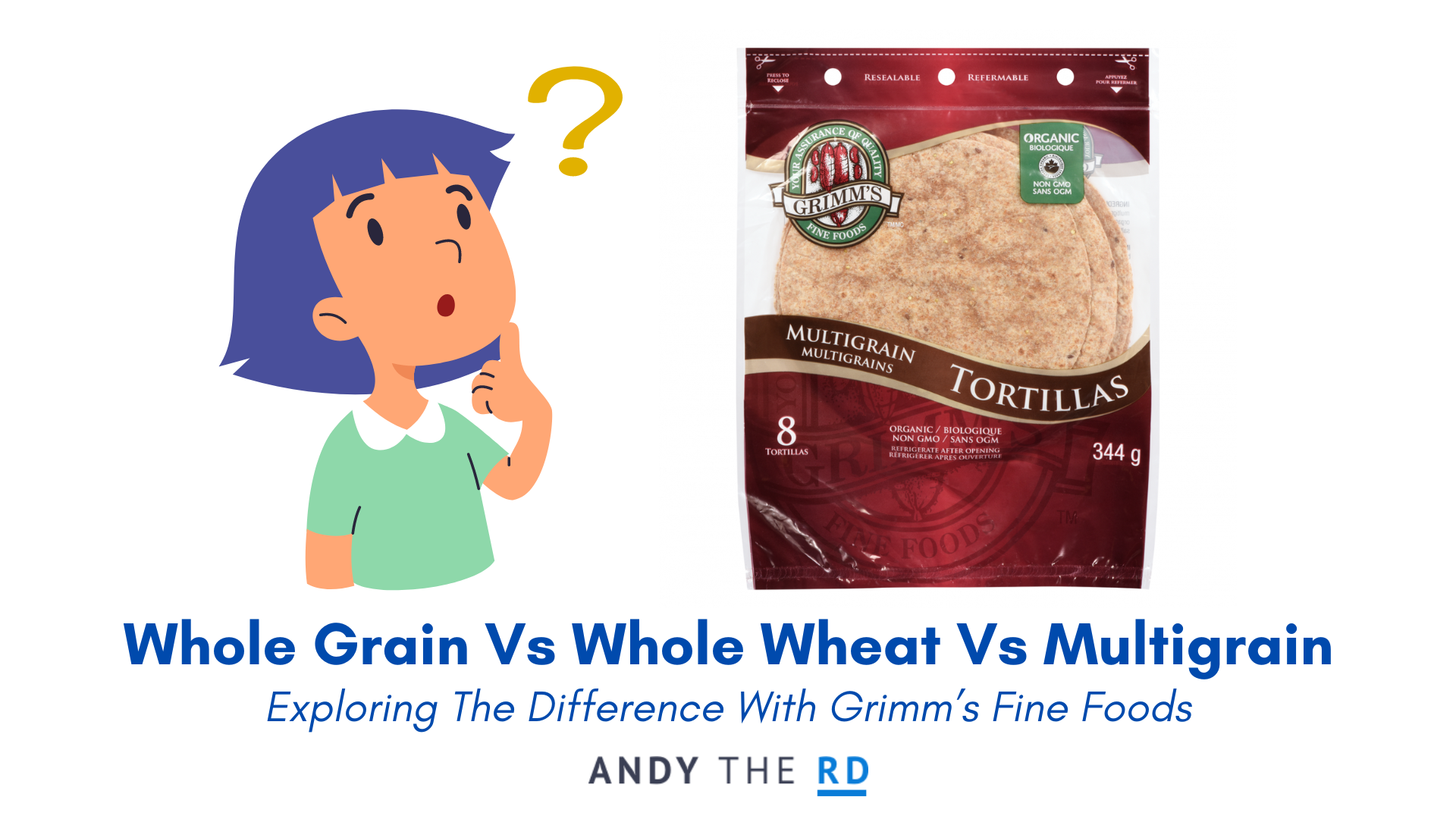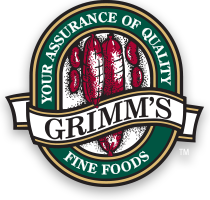Hello everyone!
Today’s featured content is brought to you in partnership with Grimm’s Fine Foods.
Grimm’s prides themselves on premium ingredients, European tradition and a desire to meet consume needs across an expansive variety of products including high-quality meat products, tortillas, wraps, and snacks.
In today’s post I’m going to be highlighting their organic multigrain tortilla, pictured below, as a means to start the conversation around the difference between wholegrain, wholewheat and multigrain products.
It just so happens that Grimm’s multigrain tortilla is both wholegrain and multigrain, and you’ll understand what that means after reading through.
I’ll also demonstrate afterwards how I combine Grimm’s multigrain tortilla with their roast beef product to make a quick, nutritious alternative to grabbing a burger.

On first glance we can make some notable observations about this product.
Organic Label + Logo
Which indicates that this product meets the Canadian government standards for organic products and that the product contains 95-100% organic ingredients. In Canada, organic always means non GMO.
Multigrain
The word multigrain indicates that a product is made up of grain, which when we see the nutrition label below it is clear that this tortilla contains a wide array of nutritious additions including barley, rye, oat, flax millet and buckwheat.

Now here’s where it gets interesting, in a good way!
Ingredients on a food label are listed by weight, meaning the ingredient that is most representative of the product is listed first.
You’ll notice the first ingredient on this product is organic whole grain whole wheat flour.
That’s a very important, very relevant word combination.
Whole Grain Vs Whole Wheat
Whole wheat flour is not the same as whole grain whole wheat flour because, in Canada, “whole wheat flour” may have much of the germ (nutrient-dense part of the grain) removed.
Whole grain whole wheat flour indicates the flour used has all of the original grain components intact and thus will be of the highest nutritional value.
That’s not to say that whole wheat flour is a bad choice, just objectively speaking I want you to know a difference exists and that whole grain whole wheat is technically a superior choice.
Excited yet?
Let’s take it one step further and compare the nutrient profile of a wrap made with Grimm’s wholegrain tortilla and Home Style Roast Beef (pictured below) to a standard fast food burger.
For the sake of today’s comparison, I’ll use the nutrition info of the starch and meat aspect only.
A Grimm’s Roast Beef Wrap – 200 Cals
Made with 1x Grimm’s wholegrain tortilla and 1/2 package [4 slices of] Home Style Roast Beef.
- 15 grams protein
- 3 grams fibre
- 4 grams saturated fat
- ~800 mg sodium
Fast Food Burger – 400+ Cals
Made with standard bun, burger patty.
- 18 grams protein
- 1 gram of fibre
- 6 grams saturated fat
- ~700 mg sodium
My Breakdown
For a similar amount of protein and sodium you are getting a wholesome, homemade sandwich that has triple the fibre, half the caloric value and 33% less saturated fat.
It will also inevitably have a lower glycemic index owing to the fact Grimm’s tortilla is made with whole grain whole wheat flour.
Click Below To Learn More About Grimm’s





